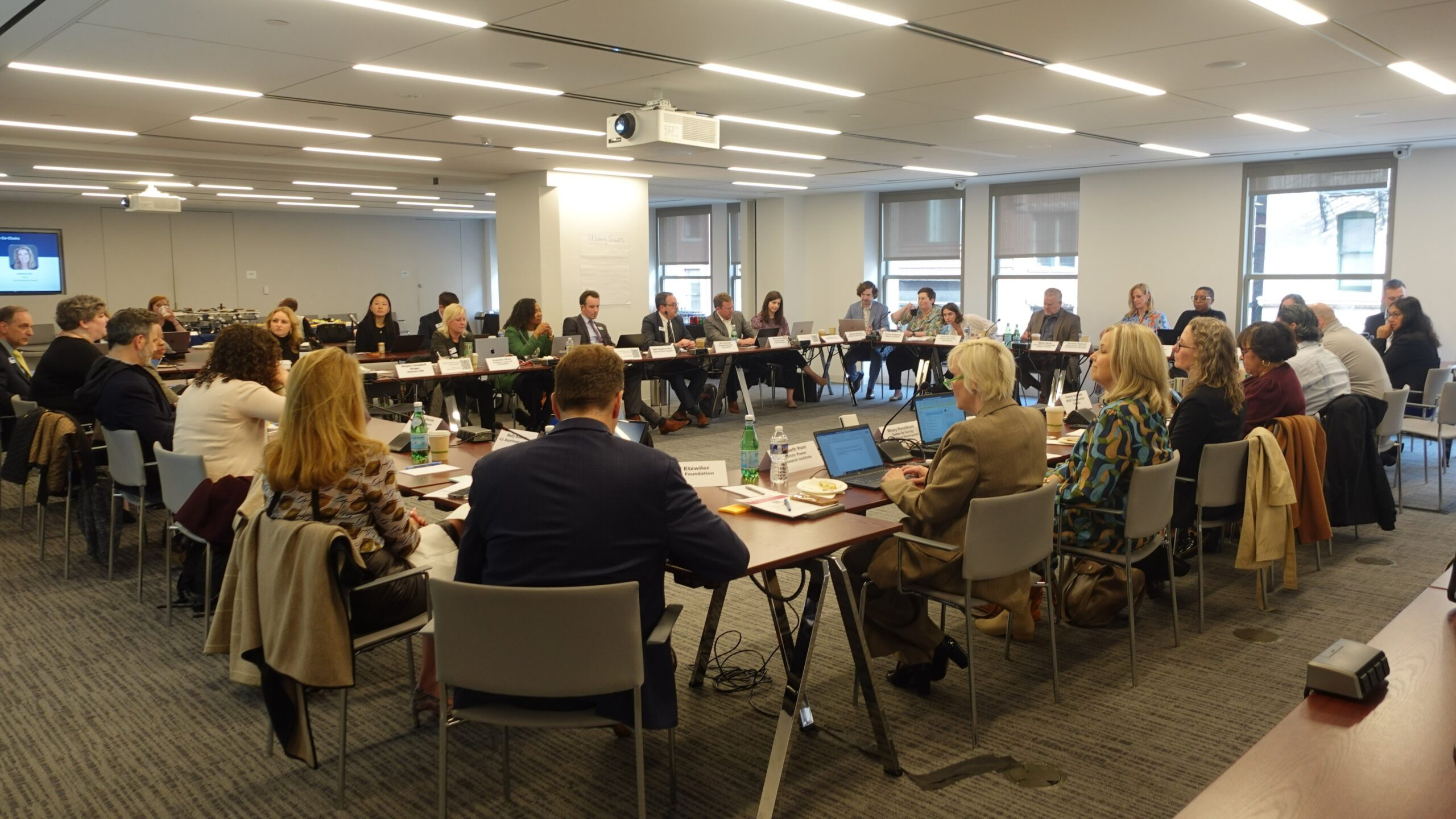Written testimony by Governor Sandoval and Governor Bullock on behalf of NGA to the Senate Homeland Security and Governmental Affairs Committee on the importance of FEMA grant programs for state preparedness.
The Honorable Ron Johnson
Chairman
340 Dirksen Senate Office Building
Washington, DC 20510
The Honorable Claire McCaskill
Ranking Member
442 Hart Senate Office Building
Washington, DC 20510
Dear Chairman Johnson and Ranking Member McCaskill:
On behalf of the National Governors Association (NGA), we thank you for allowing us the opportunity to submit the written testimony. NGA appreciates the Committee’s willingness to hold a hearing this year on the Federal Emergency Management Agency’s (FEMA) focus on “prioritizing a culture of preparedness.”
This hearing is even more critical this year in light of the robust disaster relief response efforts following hurricanes Harvey, Irma, Maria and Nate which includes the responses to historic and terrible flooding in Puerto Rico, the Virgin Islands, Louisiana, Texas and Florida. This is compounded by the massive response to over 66,000 wildfires in the west which impacted over 4.5 million American homes. The cost of this totals over $300 billion, a record cost and a burden states could not take on alone.
Assuring the safety and security of citizens is one of the paramount duties of governors. With the constantly evolving threat of terrorism and increased occurrences of natural disasters, governors must maintain and continually update state strategies to prevent, prepare for, respond to and recover from emergencies. As you know, most emergencies and disasters start at the local level. Therefore, states are at the forefront of response and governors must provide leadership to coordinate state and local resources to ensure the protection of critical infrastructure, property and the wellbeing of our citizens. This means working on investments that help reduce overall costs and ensure rapid recovery after an event.
State/Federal Partnerships
As an active partner in responding and recovering to disasters, the federal government must continue to work with governors, states and local governments to provide support for developing and maintaining critical homeland security and emergency management capabilities. Leveraging resources, strengthening coordination and improving information exchange between federal and state authorities remains critical to addressing these challenges and meeting the homeland security and public safety needs of our states and the nation. This includes considering the following:
- Developing national plans and strategies in collaboration among federal, state and local governments;
- Adequately funding any federal law requirements imposed on states;
- Proactively working with state resources, including the robust network of state and local fusion centers, state and local first responders and the National Guard;
- Providing maximum flexibility on how grant funds are used and affirming that grant funds should be coordinated through the state;
- The federal government, in collaboration with states, should enhance efforts to secure critical infrastructure, transportation systems and food supply chains, including increased use of advanced technology;
- Maintaining and expanding efforts to enhance mitigation practices, foster regional collaboration and build more resiliency into disaster preparedness activities.
The Impacts of Cuts to Grant Programs
As you know, FEMA administers over $2 billion annually in state and local grant programs. This investment helps states develop and sustain critical capabilities such as intelligence fusion centers, statewide interoperable emergency communications and specialized regional response teams. These state and local capabilities allow the federal government to focus efforts on more critical gaps and vulnerabilities.
Governors remain concerned about the continued cuts to federal grant programs for states. Federal funding for homeland security grant programs has decreased by more than 75 percent since the program’s inception in 2003, yet the structure remains unchanged. Additionally, there have been more and more calls for state matching for federal programs. The impact of this, combined with ongoing state and local fiscal challenges, warrants reconsideration of the current grant structure to ensure funds can continue to be used as effectively as possible. Governors need flexibility to address a constantly evolving threat environment.
Steep decreases and instability of grant funding to state and local governments make it difficult to not only sustain capabilities, but also to prepare for new threats. This is why governors have continually called on the Administration and Congress to prioritize investments in the critical federal programs to ensure that states have the resources needed to respond to natural disasters, protect critical cyber infrastructure networks, and perform other critical homeland security roles.
States, locals and the federal government have spent billions of dollars through FEMA grant programs. Programs such as the State Homeland Security Grant Program (SHSGP) and the Emergency Management Performance Grant (EMPG) Program help to build capabilities that the federal government does not have to build itself but can rely on in the event of a crisis.
As noted in the 2018 Edition of the joint report [1] by the National Emergency Management Association and the U.S. Council of International Association of Emergency Managers on the EMPG program, 2,099 state plans and 94,822 local plans were developed, maintained or updated. Additionally, over 2.6 million personnel received training and over 184 million citizens were touched by outreach programs that used EMPG funds. This truly ensures preparedness at the most local levels.
The Fiscal Year 2019 President’s Budget request includes $522 million for a new, competitive, all-hazards preparedness grant program. FEMA notes that grantees would be required to measure results in reducing preparedness capability gaps and robust evaluation. However, we have concerns over the lack of clarity on what this program would entail.
NGA is interested to know the desired goal and outcome of any new grant program established under FEMA, such as the one included in the budget request provided they ensure state flexibility.
The success of these grant programs impacts the daily lives of our citizens, and ensures our nation continues to prepare for, respond to and recover from all disasters.
Considerations for Grant Reform and Improvements
As Congress and the Administration look to either reform or modify grant programs, we ask that you continue to ensure that grants maintain strong baseline funding, are risk-based and continue to provide each state and territory funding to support critical homeland security and emergency management capabilities, including personnel costs and the sustainment of investments. Governors believe federal funding provided to states should focus on developing or enhancing common core capabilities and support efforts to measure the effectiveness of grant funds in building and maintaining preparedness and response capabilities.
NGA has provided several priorities for homeland security grant reform, to include:
- Funding should focus on developing, enhancing and sustaining common core capabilities.
- The federal government should work with states and territories to develop consistent methods to measure or assess progress in achieving common core capabilities.
- Grant funding should be distributed through states and territories to enhance regional response capabilities, avoid duplication of effort and ensure awareness of gaps in capabilities.
- Consistent with current law, states should be permitted to use a portion of the grant funds for management and administration in order to coordinate the efficient and effective use of grant funds, provide necessary oversight and comply with federal reporting requirements.
- Additional reforms to current grant funding programs should evaluate the opportunity to provide additional support for pre-disaster mitigation and resilience investments that can measurably reduce risks and costs associated with future response and recovery.
- Any reform to the current grant programs should be collaborative and provide states with flexibility to determine which priorities should be funded and where investments should be made within their borders.
- Any grant program should allow flexibility for state cost-share requirements.
- The federal government should provide clear, timely and explicit guidelines for conducting threat assessments and how those assessments will be used to determine base-level funding.
- The federal government should be more transparent with states in sharing the data used to populate the funding formula/algorithm. States should be provided with a centralized point of contact and reasonable time to review and inform the data.
- The federal government should ensure that reforms eliminate inefficiencies, without duplicating efforts, or placing additional administrative burdens on states.
- Grants should allow for multi-year strategic planning by states and local jurisdictions.
Ongoing, dedicated federal support is crucial to ensure states and localities have sufficient capacity to handle more routine disasters. Governors and the federal government share the responsibility of ensuring the safety and security of the citizens of the country. States have continued to respond efficiently to disasters even with decreased federal support.
However, states cannot maintain the status quo indefinitely. Therefore, governors hope that Congress will work to ensure FEMA grant programs receive funding commensurate with the level of federal expectations and requirements.
National Guard
As you know, the National Guard was critical in response and recovery efforts during the 2017 hurricane and wildfire season. Guard units from across states provided affected areas with manpower and equipment. States did all of this on a moment’s notice, without thought to the impact on their own budgets and spending, as they know it is the right thing to do. However, the unprecedented scale of these disasters cannot be supported by states alone for such prolonged periods of time.
Over 20,000 guardsmen were activated to respond to the terrible flooding in Texas after Hurricane Harvey. Over 8,000 Guardsmen are responding to the needs of Puerto Rico and the Virgin Islands with search and rescue operations, distribution of food and water and providing security.
Along with manpower, Guard units are deploying helicopters, medevac aircraft, cargo aircraft, Humvees and other support vehicles as part of the response effort.
Governors remain concerned about the impact to our National Guard during large scale, protracted disasters that require a large intra-governmental response.
We believe that a more streamlined and operationally effective model is attainable to ensure the proper resourcing and reimbursement of our National Guard for their critical assistance in responding to these devastating natural disasters. However, this may require new authorities to help streamline funding and reimbursement mechanisms through the Disaster Relief Fund and the Stafford Act.
Conclusion
As Chief Executive Officers of our states, we understand the difficult budgetary decisions ahead for Congress. Governors stand ready to partner with you to creatively address fiscal challenges and produce federal funding solutions that allow the economy of our nation and each state to remain strong.
We look forward to working with you and appreciate your willingness to hear from the nation’s governors on these critical issues. NGA welcomes the opportunity to work with your committee as you assess the current grant programs and consider other potential reforms.
Respectfully,
Governor Brian Sandoval
Chair
National Governors Association
Governor Steve Bullock
Vice-Chair
National Governors Association
cc.
- The Honorable Tom Carper
- The Honorable Steve Daines
- The Honorable Michael Enzi
- The Honorable Kamala Harris
- The Honorable Margaret Hassan
- The Honorable Heidi Heitkamp
- The Honorable John Hoeven
- The Honorable Doug Jones
- The Honorable James Lankford
- The Honorable John McCain
- The Honorable Rand Paul
- The Honorable Gary Peters
- The Honorable Robert Portman
[1] National Emergency Management Agency and the U.S. Council of International Association of Emergency Managers, Emergency Management Performance Grants: Providing Returns on a Nation’s Investment, 2018 Edition












